A while back I was searching eBay for Epiphone guitars when I spotted this oddity, which appeared to be an Epiphone neck bolted to a two-pickup Strat-style body (Photo 1). The seller posted pictures of a few small cracks in the body where the neck was attached (Photo 2). I emailed him asking how stable the neck was with those cracks, and he assured me that the guitar played fine and he never had trouble keeping it in tune.
Photo 2
Even so, I wasn’t quite ready to place a bid, but he kept reducing the price until it got ridiculously low. At that point I pulled the trigger and won it for $55 plus $25 shipping. The guitar reminded me of an early Ritchie Blackmore signature model Strat that Fender offered years ago, which came stock with only two pickups. In Deep Purple’s heyday, Blackmore relied on his Strat’s neck and bridge pickups for almost all his concerts and recordings, and his early signature model Strat reflected that preference. There aren’t as many pickup combinations in this configuration, but you can’t dispute its simplicity. Today, most Fender Blackmore Strats come standard with three pickups.
Photo 3
I wasn’t sure what to expect when it arrived, and I was pleasantly surprised to find a really nice playing Strat-style guitar. The neck feels really good and sports jumbo frets, which make it a little Gibson-ish (Photo 3). Like a Fender, it has a 25.5" scale and—amazingly—the intonation is spot on. The fretboard position markers are reminiscent of a Rickenbacker, which appeals to me. The red painted headstock doesn’t match the white body, but who cares? Clearly this was a project guitar and I could tell it was a labor of love for the builder.
Photo 4
What originally attracted me was how this guitar looked in the photos. The pickup covers and pickguard have aged nicely over the years. I’m not sure where the body came from, but it seems to work well with this neck. With its 4-bolt plate (Photo 4), the neck seems securely seated and provides good sustain. The small cracks at the neck joint are simply the result of sloppy workmanship by the original builder, who was trying to force the neck into a tight pocket.
Bottom Feeder Tip #288: Sometimes you have to take a chance on a guitar, especially if the price is right and it has a flaw. Remember, the buyer has most of the power on eBay. Make sure the buying price is low enough that you could sell it later and not lose money. This guitar falls into that category.
Photo 5


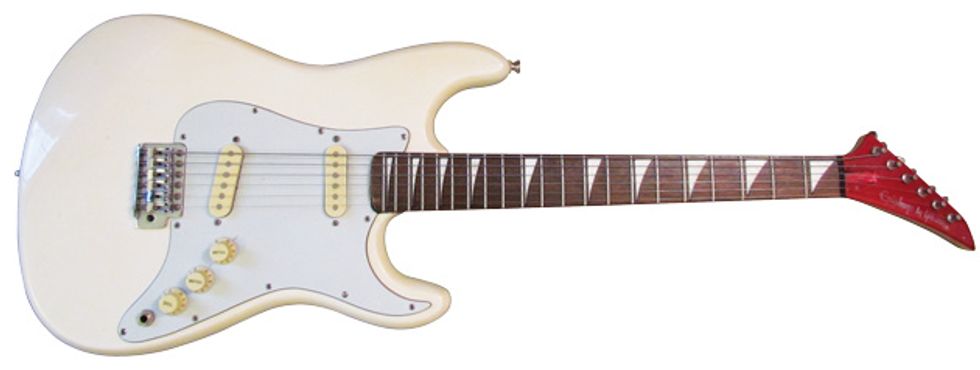

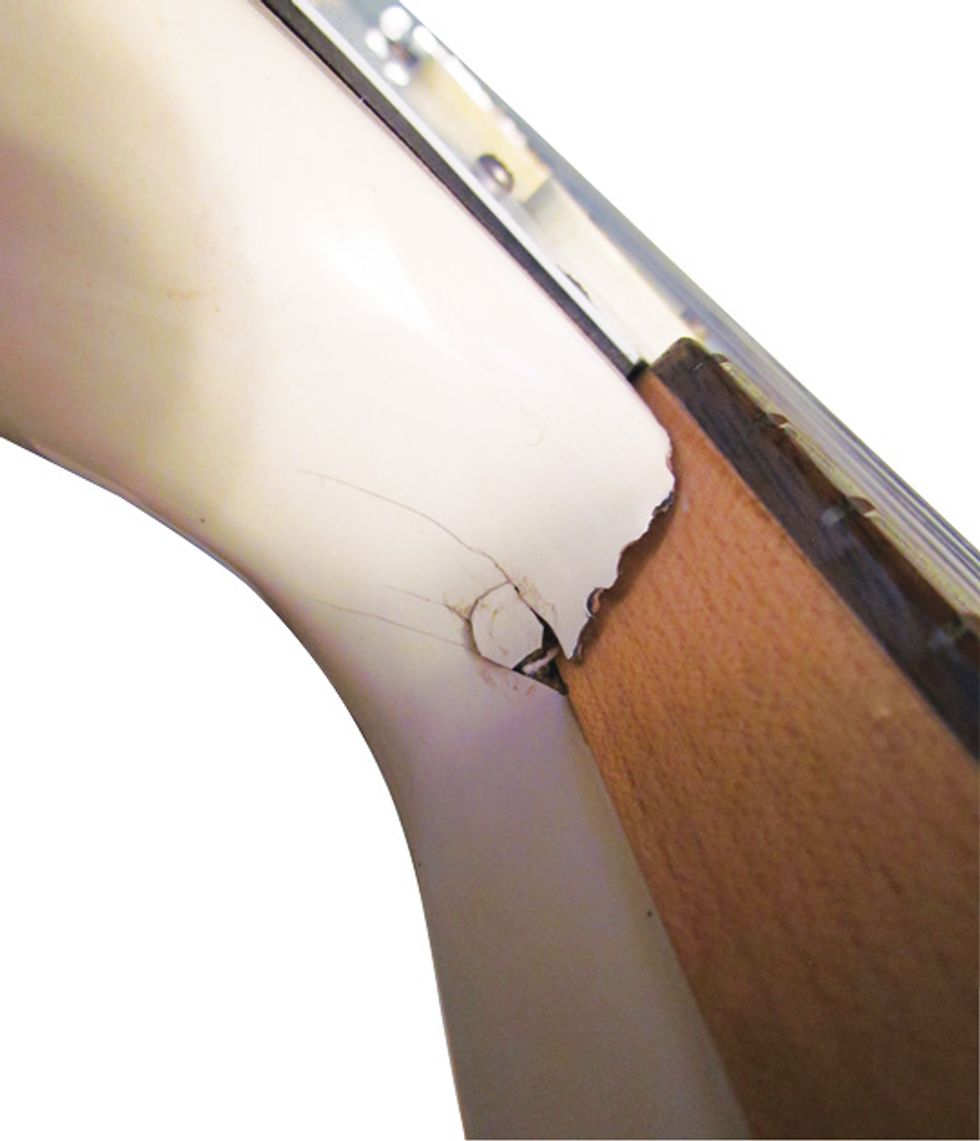
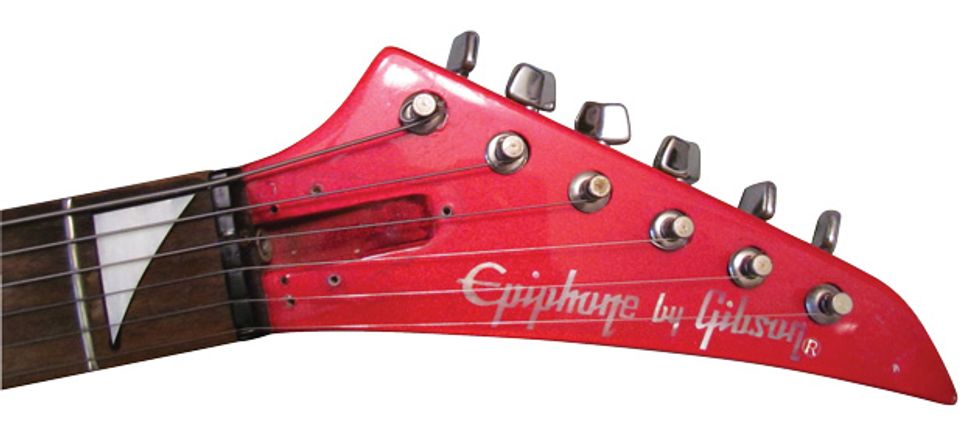
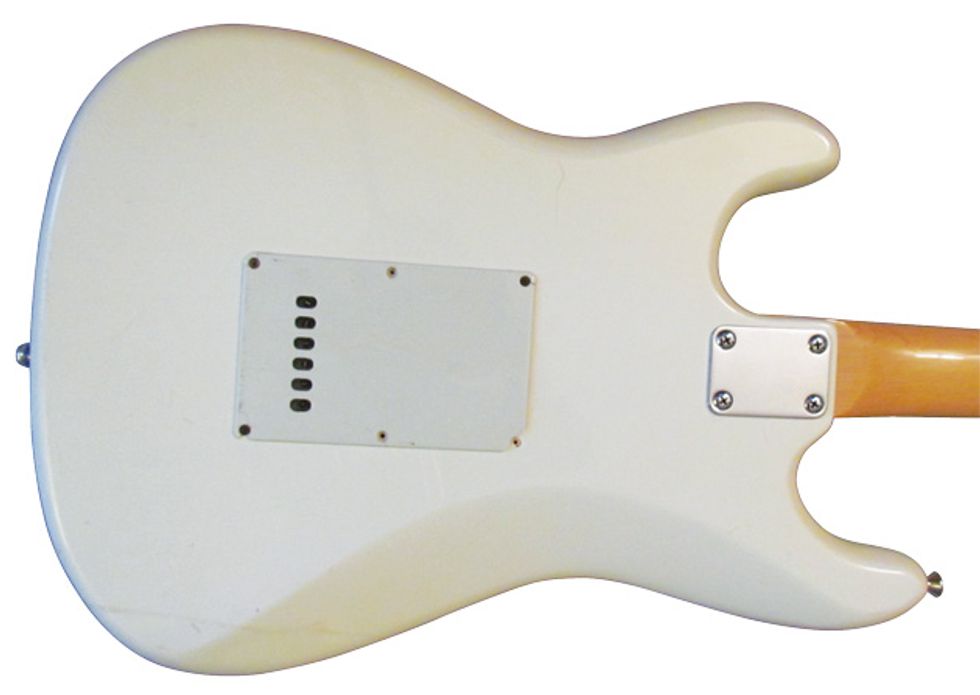
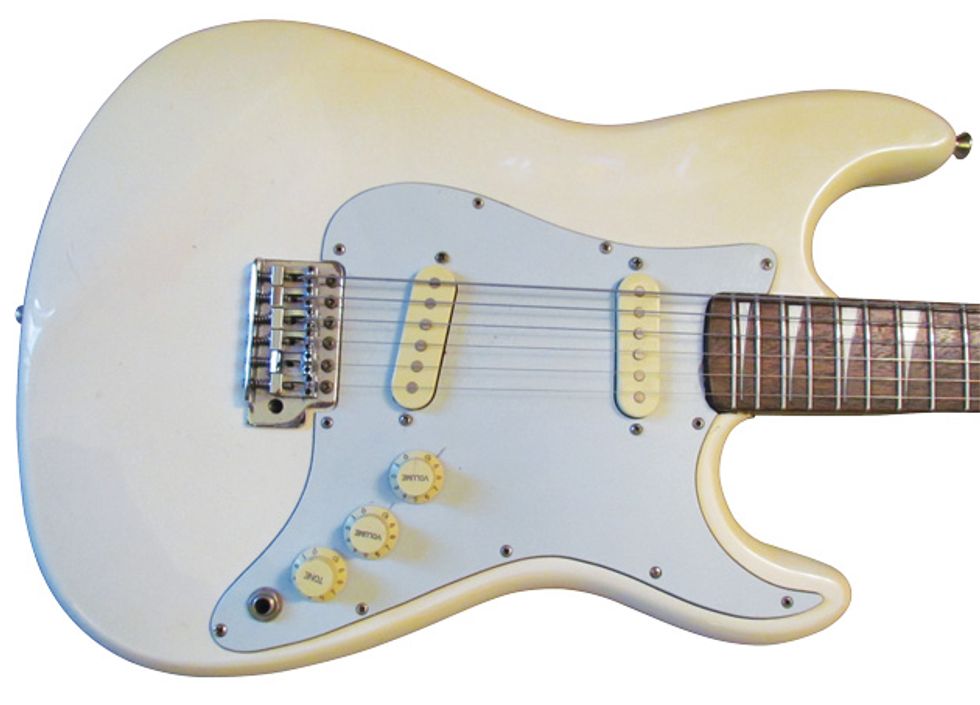




![Rig Rundown: Russian Circles’ Mike Sullivan [2025]](https://www.premierguitar.com/media-library/youtube.jpg?id=62303631&width=1245&height=700&quality=70&coordinates=0%2C0%2C0%2C0)

















